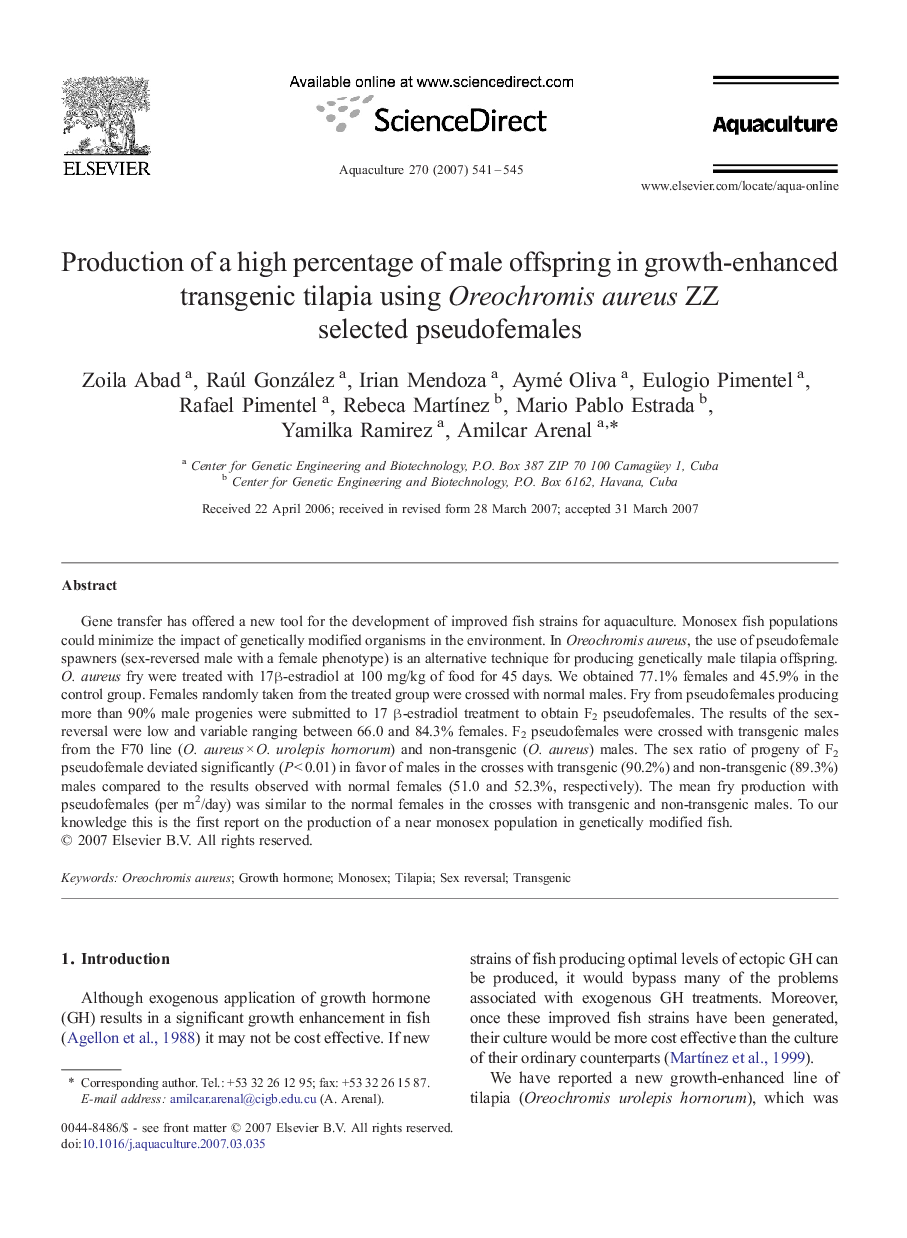| Article ID | Journal | Published Year | Pages | File Type |
|---|---|---|---|---|
| 2425080 | Aquaculture | 2007 | 5 Pages |
Gene transfer has offered a new tool for the development of improved fish strains for aquaculture. Monosex fish populations could minimize the impact of genetically modified organisms in the environment. In Oreochromis aureus, the use of pseudofemale spawners (sex-reversed male with a female phenotype) is an alternative technique for producing genetically male tilapia offspring. O. aureus fry were treated with 17β-estradiol at 100 mg/kg of food for 45 days. We obtained 77.1% females and 45.9% in the control group. Females randomly taken from the treated group were crossed with normal males. Fry from pseudofemales producing more than 90% male progenies were submitted to 17 β-estradiol treatment to obtain F2 pseudofemales. The results of the sex-reversal were low and variable ranging between 66.0 and 84.3% females. F2 pseudofemales were crossed with transgenic males from the F70 line (O. aureus × O. urolepis hornorum) and non-transgenic (O. aureus) males. The sex ratio of progeny of F2 pseudofemale deviated significantly (P < 0.01) in favor of males in the crosses with transgenic (90.2%) and non-transgenic (89.3%) males compared to the results observed with normal females (51.0 and 52.3%, respectively). The mean fry production with pseudofemales (per m2/day) was similar to the normal females in the crosses with transgenic and non-transgenic males. To our knowledge this is the first report on the production of a near monosex population in genetically modified fish.
